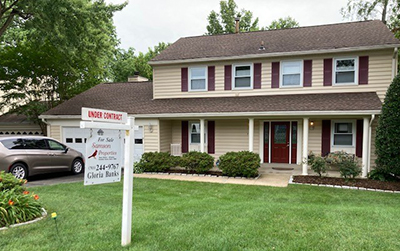
3Q Mortgage Lending Falls to 3-Year Low

Mortgage lending fell by another 19 percent in the third quarter—the sixth straight quarterly drop—to its lowest level in three years, reported ATTOM, Irvine, Calif.
The company’s third-quarter U.S. Residential Property Mortgage Origination Report showed 1.97 million mortgages secured by residential property (1 to 4 units) originated, down 19 percent from the second quarter and down 47 percent from a year ago, representing the biggest annual drop in 21 years.
Lenders issued $636.5 billion worth of mortgages in the third quarter of 2022. That was down quarterly by 22 percent and 46 percent annually. As with the number of loans, the annual decrease in the dollar volume of mortgages stood out as the largest since at least 2001.
Rick Sharga, executive vice president of market intelligence with ATTOM, said the results were the latest sign that the 11-year U.S. housing market boom is losing steam.
“There are no surprises in this quarter’s loan origination numbers, as the unprecedented jump in mortgage rates has battered both the purchase and refinance markets,” Sharga said Rick Sharga. “Prospective homebuyers have been priced out of the market by the combination of 7 percent mortgage rates and higher home prices. And refinance activity will probably continue to decline, since the majority of homeowners have loans with sub-4 percent interest rates.”
The report said the continued dip came as just 661,000 residential loans rolled over into new mortgages and borrowers took out only 943,000 loans to buy homes during the third quarter. As mortgage interest rates continued to climb, refinancing activity fell by 31 percent from the second quarter and 68 percent from a year earlier. Refinancing activity has dropped for six consecutive quarters, to a level that is just one-quarter of what it was in early 2021. Dollar volume of refinance loans July through September fell by 33 percent from the prior quarter and 67 percent annually, to $212 billion.
Purchase loans, meanwhile, slumped by 16 percent quarterly and 33 percent annually, while the dollar volume decreased to $353.9 billion. Only a 5 percent quarterly jump in the number and value of HELOCs – the third quarterly straight gain – kept the industry from seeing an across-the-board contraction.
The report said 364,921 HELOCs originated on residential properties in the third quarter, up 5.1 percent from 347,086 in the prior quarter and up 47.8 percent from 246,957 a year ago. HELOC activity increased for the fifth time in six quarters after it had decreased in each of the prior six quarters. The $70.5 billion third-quarter volume of HELOC loans was up 4.7 percent from $67.3 billion in the second quarter and 47.5 percent from $47.8 billion in the third quarter of last year, hitting the highest point in four years. HELOCs comprised 18.5 percent of all third-quarter loans – nearly four times the 4.8 percent level from a year ago.
“While HELOC activity has dramatically increased over the past few quarters, its growth rate slowed down significantly on a quarter-to-quarter basis, which raises the question of whether we might be at or near a cyclical peak in HELOC activity,” Sharga said. “Even with the recent increases, HELOC volume is still nowhere near the record level of activity we saw in the mid-2000s during the run-up to the financial crisis.”
The report also noted mortgages backed by FHA rose as a portion of all lending for the fourth straight quarter, accounting for 224,021, or 11.4 percent, of all residential property loans originated in the third quarter. That was up from 10.7 percent in the second quarter and 9.3 percent a year ago. Residential loans backed by VA accounted for 103,314 or 5.2 percent, of all residential property loans originated in the third quarter, up from 5.1 percent in the previous quarter but still down from 6.3 percent a year earlier. VA lending as a portion of all loans rose after seven consecutive quarterly declines.
ATTOM said the median loan amount fell to $315,000, down 4.5 percent from $330,000 the prior quarter, following 10 straight increases. However, it rose by 4.2 percent from $302,197 a year ago. The median down payment on single-family homes and condos purchased with financing in the third quarter decreased to $34,975, down 12.5 percent from $39,980 in the previous quarter, although still up 11.9 percent from $31,250 in the third quarter of 2021.
The typical down payment in the third quarter of this year represented 9.3 percent of the purchase price, down from 10.2 percent in the prior quarter but still up from 8.9 percent a year earlier.
